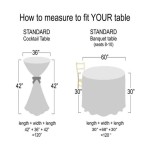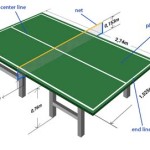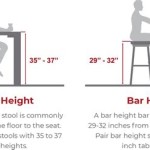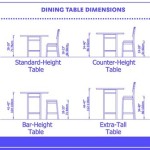Bedside Tables with Secret Compartments: A Blend of Functionality and Discretion
The evolution of furniture design reflects a continuous effort to optimize space, aesthetics, and utility. Among the numerous pieces of furniture designed for the bedroom, the bedside table holds a position of considerable importance. It serves as a practical surface for nighttime essentials like lamps, books, and beverages, while also contributing to the room's overall décor. A specific and intriguing variation of the bedside table is the one equipped with a secret compartment. These tables offer a unique blend of functionality and discretion, appealing to individuals seeking secure and hidden storage within their personal space.
Bedside tables with secret compartments are not a new invention. Throughout history, furniture has been designed with hidden drawers, compartments, and panels, often serving as repositories for valuables, documents, or personal items. In earlier eras, these concealed spaces were frequently implemented in large, ornate pieces of furniture designed for wealthy households. The modern iterations of these secretive furnishings, however, have been adapted for contemporary living spaces and are available in a range of styles, sizes, and price points.
The appeal of a bedside table with a secret compartment lies in its ability to provide a discreet storage solution without compromising the visual appeal of the furniture piece. Unlike a safe or a locked box, a bedside table blends seamlessly into the bedroom environment, drawing minimal attention to its secretive nature. This makes it an ideal option for storing items that require a degree of security but also need to be readily accessible.
Key Point 1: Practical Applications and Uses
The practical applications of a bedside table with a secret compartment are varied and dependent on the individual's needs and preferences. The most common use is for storing valuables such as jewelry, cash, important documents, or small electronics. Because the compartment is hidden, it offers an added layer of security against opportunistic theft. The placement of the table next to the bed further enhances its utility, allowing for quick access to these items in case of emergencies or unexpected situations.
Beyond valuables, these tables can also be used to store personal items that individuals prefer to keep out of sight. This might include journals, letters, or other sentimental objects that hold significant personal value. The secret compartment provides a private space for these items, protecting them from casual observation and ensuring their preservation.
Furthermore, the discreet nature of the hidden compartment makes it suitable for storing potentially sensitive or confidential items. Individuals might use it to store medication, personal hygiene products, or other items that they prefer to keep private. The bedside location allows for easy access to these items while maintaining a degree of privacy and discretion.
From a security perspective, while a bedside table with a secret compartment should not be considered a replacement for a robust safe, it can act as a deterrent against casual theft. A burglar conducting a quick search of a bedroom is less likely to discover a well-concealed compartment within a seemingly ordinary piece of furniture. This can provide valuable time for the homeowner to react or alert the authorities.
Key Point 2: Design and Construction Considerations
The design and construction of a bedside table with a secret compartment are crucial factors determining its effectiveness and overall quality. The key to a successful design is seamless integration of the hidden compartment into the table's structure. The compartment should be concealed in a way that is not immediately obvious to the casual observer. This can be achieved through various techniques, such as using false bottoms, hidden drawers, or disguised panels.
The choice of materials used in construction also plays a significant role. High-quality hardwoods, such as oak, maple, or cherry, are commonly used for their durability and aesthetic appeal. These materials provide a solid foundation for the table and ensure that the secret compartment remains secure and undetectable. The finish of the wood can also contribute to the overall concealment, with darker stains and textured surfaces often proving more effective at masking the presence of the hidden space.
The mechanism used to access the secret compartment is another important design consideration. Some tables utilize simple push-to-open mechanisms, while others employ more complex locking systems. The choice of mechanism depends on the desired level of security and ease of access. A well-designed mechanism should be both reliable and discreet, allowing the user to access the compartment quickly and easily while keeping its existence hidden from others.
The size and dimensions of the secret compartment should also be carefully considered based on the intended use. A larger compartment can accommodate a wider range of items, while a smaller compartment may be more discreet. The compartment should be sized appropriately to hold the items that the user intends to store, without compromising the structural integrity of the table. Attention to detail in the fit and finish of the compartment is also paramount. A poorly designed or constructed compartment can be easily detected, defeating the purpose of the secret storage.
The overall style of the bedside table should also complement the existing décor of the bedroom. Bedside tables with secret compartments are available in a wide range of styles, from traditional to contemporary. Choosing a style that blends seamlessly with the room's aesthetic will help to maintain the table's inconspicuous nature. The addition of features such as USB charging ports or integrated lighting can further enhance the table's functionality without compromising its discreet design.
Key Point 3: Types of Secret Compartment Mechanisms
The mechanisms used to conceal and access secret compartments in bedside tables vary widely, each offering different levels of security and discretion. Understanding these mechanisms is crucial in selecting a table that meets specific needs and preferences.
One common type of mechanism involves a false bottom or back panel. These are typically held in place by magnets, latches, or friction. By carefully manipulating the panel, the user can reveal the hidden compartment beneath. This type of mechanism is relatively simple to implement and offers a decent level of concealment, particularly if the panel is well-integrated into the table's design.
Another type of mechanism involves a hidden drawer or sliding panel. This can be concealed within the table's frame, disguised as a decorative molding or an inconspicuous section of the table's surface. To access the compartment, the user must locate and activate a release mechanism, which might involve pressing a hidden button, rotating a specific element of the table, or using a specialized tool. These mechanisms tend to offer a higher level of security and discretion than false bottoms or back panels.
Some bedside tables with secret compartments incorporate more sophisticated locking mechanisms, such as combination locks or keyed locks. These mechanisms provide an added layer of security, preventing unauthorized access to the hidden compartment. The locks are typically concealed within the table's structure, making them difficult to detect without knowing their location. However, the presence of a lock may also draw attention to the possibility of a secret compartment.
Another interesting variation involves using pressure-sensitive mechanisms to activate the secret compartment. By applying pressure to a specific point on the table's surface, the user can trigger the release of a hidden drawer or panel. These mechanisms are often highly discreet, as they do not require any visible buttons or latches. However, they also require a certain level of precision and knowledge to operate effectively.
Finally, some high-end bedside tables with secret compartments utilize electronic locking mechanisms that can be controlled with a remote or a mobile app. These mechanisms offer the highest level of security and convenience, allowing the user to access the compartment quickly and easily without the need for physical keys or combinations. However, they also require a power source and may be vulnerable to hacking or electronic malfunctions.
In summary, bedside tables with secret compartments represent a clever fusion of practicality and privacy. They cater to a desire for secure storage within the comfort of a personal space, offering a discreet solution for safeguarding valuables and personal items. The effectiveness of these tables hinges on thoughtful design, careful construction, and a well-integrated concealment mechanism. The range of options available, from simple false bottoms to sophisticated electronic locks, ensures that there is a bedside table with a secret compartment to suit diverse needs and preferences.

Wooden Bedside Cabinet With Secret Drawer Handmade In The

Nightstand With A Secret Compartment Locking Drawer Night Stand

Night Stand With Rfid Locking Compartment Made In The Usa

Nightstand With Concealed Secret Compartment

Night Stand With Locking Secret Drawer 6 Steps S Instructables

Drawer Nightstand Information For 2024 Model

I Have Brilliant Idea Secret Compartment Furniture Concealment

Casual Home Lincoln Nightstand With Concealed Compartment 615 77 The Depot

Impeccable Secret Compartment Locking Drawer Nightstand Side Table Medium Oak Com

Nightstand With Concealed Secret Compartment And Heavy Duty Linear Slides








